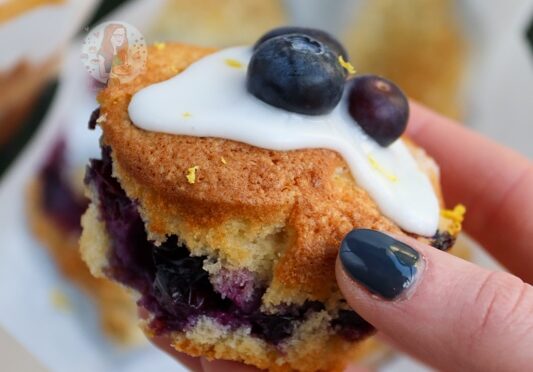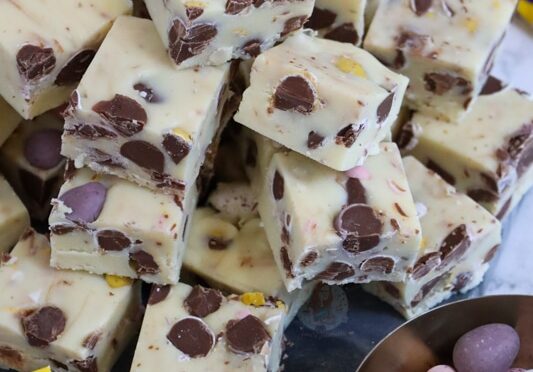So say hello to a new back-to-basics blog post – how to make delicious homemade swiss meringue buttercream.
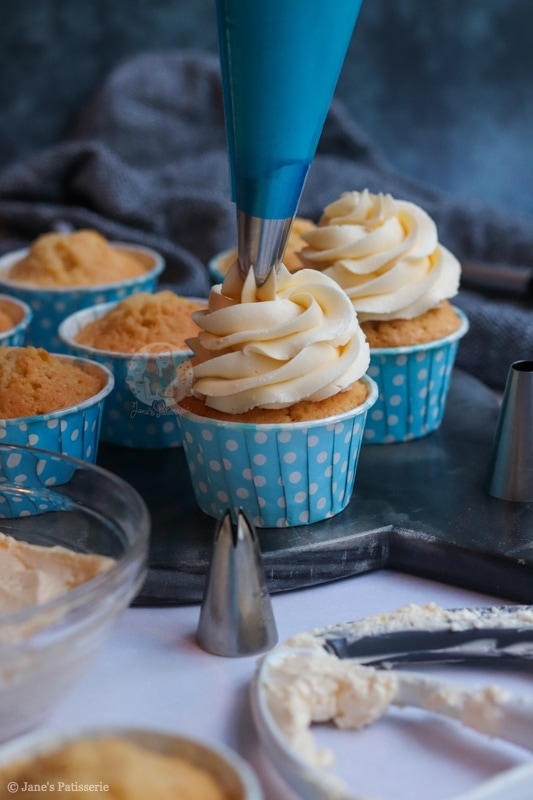
This is a recipe that has been requested over and over, so I thought I would give it the attention it deserves, and give it a blog post all to its own… swiss meringue buttercream.
If you aren’t aware, swiss meringue buttercream is different from the normal American buttercream frosting of unsalted butter and icing sugar, and different again to cream cheese frosting. It is genuinely a swiss meringue turned into the buttercream.
I did a back-to-basics blog post on cream cheese frosting as that is also a fairly difficult frosting to make sometimes, and I thought this one is on a similar level – it’s something that needs explaining in a bit of detail so you know exactly what you are doing!
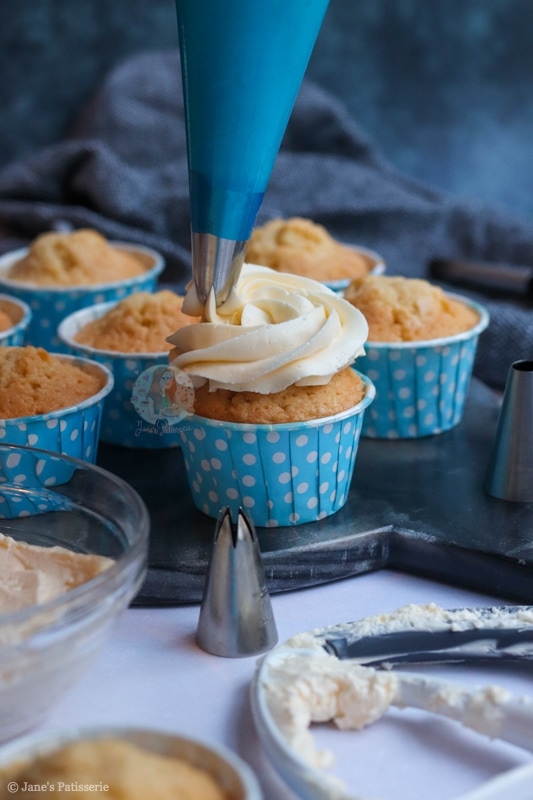
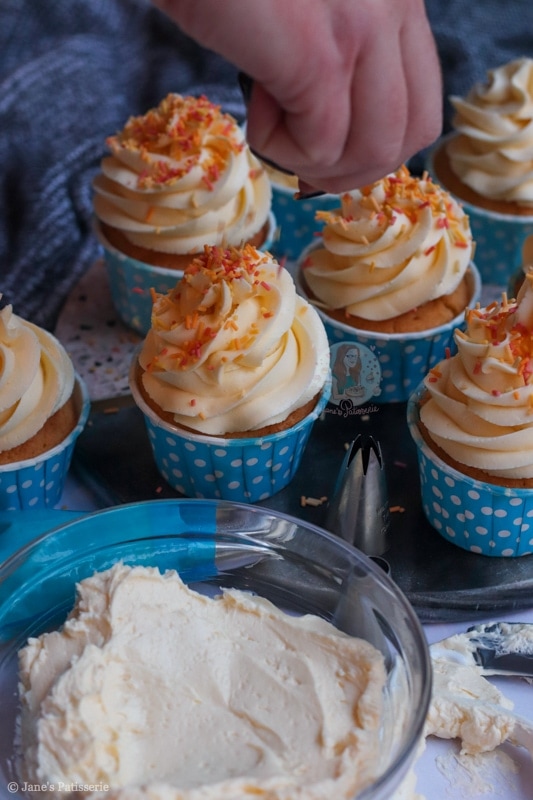
Many people like swiss meringue buttercream because it is ‘less sweet’ and has a more mousse-like texture. I would still say it is fairly sweet, just in a completely different way to the classic American buttercream frosting.
I don’t see anything wrong with the classic cake topping, as it is just so easy – but the taste of swiss meringue is just beautiful. It’s so light it is like eating a cloud – but it is a bit more time-consuming to make so be prepared.
For swiss meringue buttercream, you have to start with making sure that the block unsalted butter is at room temperature. You don’t want to heat the butter in any way to make it room temperature though, you need to leave it naturally. How long this takes depends on the time of year – peak summer is probably only 30-60 minutes, whereas peak winter may be the best overnight.
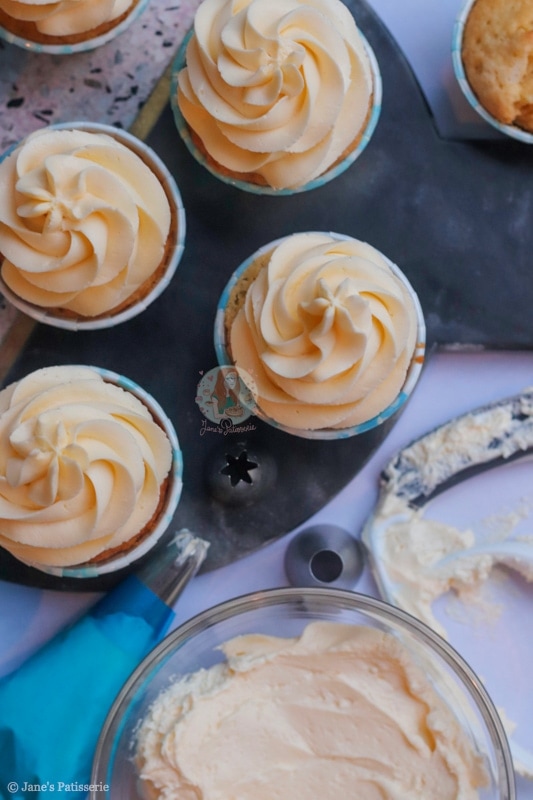
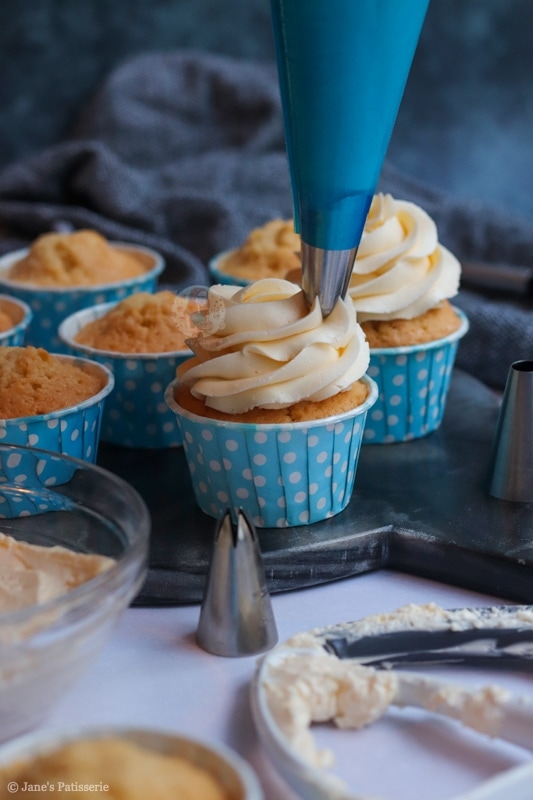
The butter wants to be at a temperature where you can press your finger into the butter to indent it really easily, but it’s not melting away. You definitely do not want to use stork, margarine, or a baking spread of any kind for this.
Once you have done this, you can start the process of the swiss meringue. Swiss meringue is made using egg whites and sugar as your normal meringue is, but with a completely different method. There are a few other types of meringue such as french or Italian, but this time we are talking swiss!
With swiss meringue, you cook the egg whites out over a double boiler, whisking, until the sugar grains have dissolved. This takes a fair amount of time as you don’t want to go crazy with the heat, and the egg whites are meant to slowly heat using just the heat of the steam underneath.


For this recipe, I cook the meringues until they reach 72ºc – or 160ºf. Technically that translates to 71.11ºc, so I just went with 72ºc. It is so important to use a sugar thermometer when making this recipe as you really do need the temperature to be accurate! You can use regular sugar thermometers or a thermometer like this one.
When you are at this stage, other than checking the temperature, you need to carefully rub some of the mixture between your fingers – the mixture should be smooth. If there is a grainy texture, then the sugar hasn’t dissolved and may need to be heated further until it is.
I used a large glass bowl over a medium pan, with about 1.5” worth of water in the bottom. The bowl sits above the water, and doesn’t touch it – you want the water to be a simmer, so once it’s boiled, I usually leave it at a half level like 5.
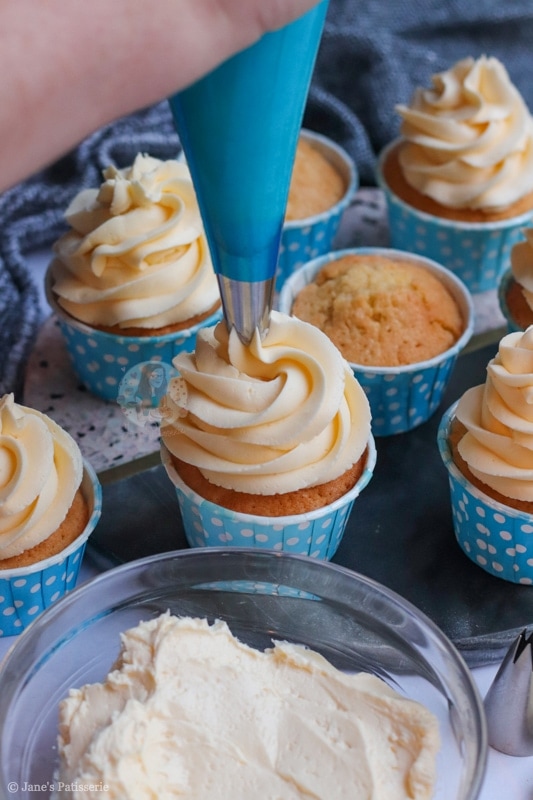
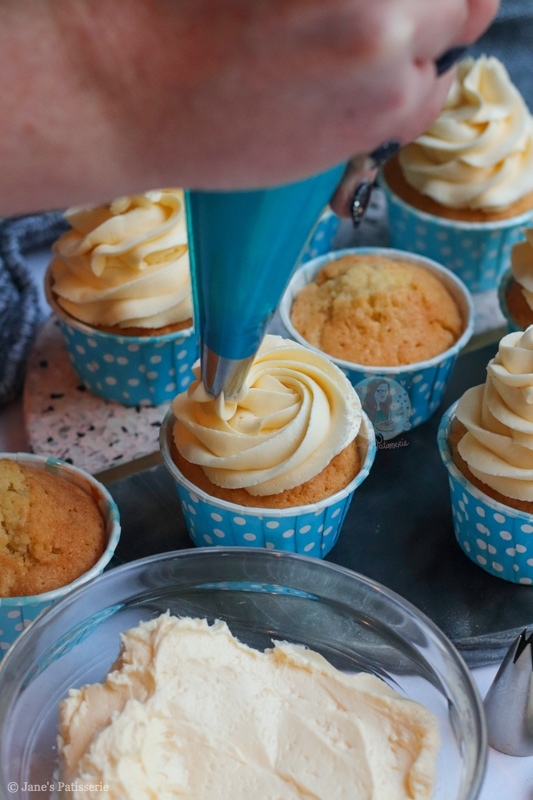
Whisk the mixture constantly, until it reaches the temperature, and then transfer to a stand mixer bowl – I will say that using a stand mixer is SO much easier than anything else, but an electric hand whisk is still better than just your arm and a balloon whisk. All in all, this recipe takes about 45 minutes to make, with about 25-30 minutes whisking.
When you whisk the eggs and sugar in a spotlessly clean bowl, you need to whisk the mixture until it reaches a lovely meringue with glossy stiff peaks and the bowl is completely at room temperature – this takes about 20 minutes, if not longer. The meringue MUST be at room temperature, so you don’t melt the butter.
If the bowl feels even slightly warm, keep on whisking until it has cooled. I whisk at about 6/7 on my KitchenAid mixer – and it’s a fair amount of time to be whisking for. If you don’t use a stand mixer, you are going to have to stand and whisk in the same way until it’s cooled.
This is when you add the butter – you need to add small amounts of butter, letting it beat in fully each time. I switch my whisk to my paddle attachment at this stage as well. I add in about 1 tbsp of butter at a go – about 1” size cube of butter.
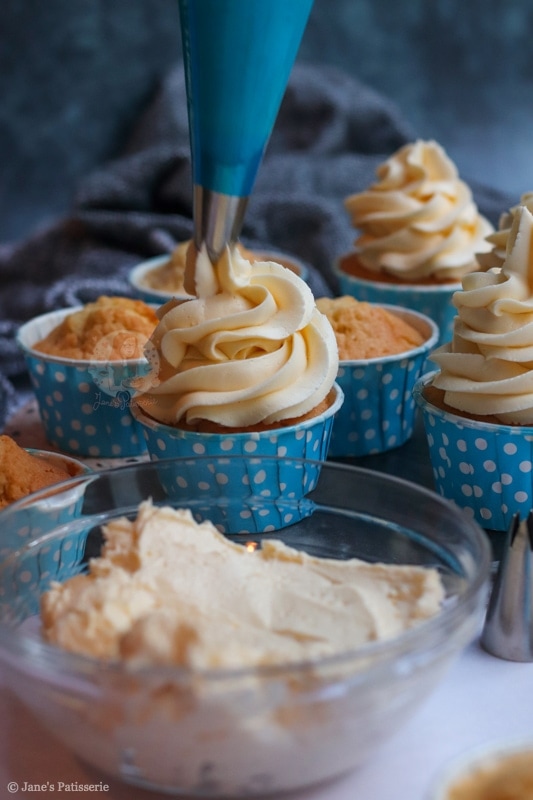

It is so important to not add too much butter, as it needs to mix in well. As you mix, the texture of the swiss meringue buttercream may change, and this is normal. You can find some troubleshooting tips below if you are worried!
Once all the butter is incorporated, add any flavouring such as 1 tsp vanilla extract, and beat for a further couple of minutes, scraping down the side of the bowl and making sure it’s combined. You should be left with a lovely delicious swiss meringue buttercream!
Troubleshooting:
- If the mixture melts into soup, the meringue was still too hot. You need to cool the bowl in the fridge for 20+ minutes, or longer, and try to re-whisk.
- If the mixture turns lumpy, keep on beating. It can often look a little strange, but it’s worth beating out. If the butter was too cold however and you have flecks of butter, you need to gently heat the bowl, whilst mixing, with a hairdryer, to gradually heat until the butter has melted.
- If the swiss meringue buttercream is grainy, the sugar wasn’t dissolved at the beginning, and you can’t fix this, unfortunately.
Other information sources for Swiss Meringue Buttercream: Liv For Cake, Natashas Kitchen & Sally’s Baking Addiction.
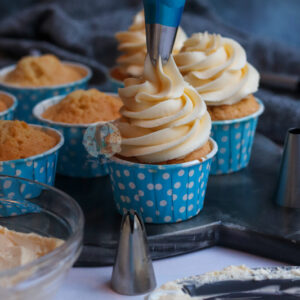
Swiss Meringue Buttercream!
#wprm-recipe-rating-4 .wprm-rating-star.wprm-rating-star-full svg * { fill: #343434; }#wprm-recipe-rating-4 .wprm-rating-star.wprm-rating-star-33 svg * { fill: url(#wprm-recipe-rating-4-33); }#wprm-recipe-rating-4 .wprm-rating-star.wprm-rating-star-50 svg * { fill: url(#wprm-recipe-rating-4-50); }#wprm-recipe-rating-4 .wprm-rating-star.wprm-rating-star-66 svg * { fill: url(#wprm-recipe-rating-4-66); }linearGradient#wprm-recipe-rating-4-33 stop { stop-color: #343434; }linearGradient#wprm-recipe-rating-4-50 stop { stop-color: #343434; }linearGradient#wprm-recipe-rating-4-66 stop { stop-color: #343434; }
Print Pin Rate
Ingredients
- 170 g egg whites
- 275 g caster sugar
- 250 g unsalted butter
- 1 tsp vanilla extract
Instructions
-
Make sure your block unsalted butter is at room temperature (see notes in the blog post).
-
Make sure the equipment you are using is spotlessly clean. Any grease or anything else can ruin meringue really easily.
-
In a medium pan, bring 1.5″ worth of water to a simmer, and add a large glass bowl on top.
-
Add the egg whites and caster sugar to the bowl, and heat over the simmering water, whisking constantly, until the mixture reaches 160ºF/72ºC (see notes in the blog post).
-
Using a sugar thermometer or normal thermometer to reach the temperature, test the mixture carefully by rubbing some of the mixture between your fingers – there should be no grainy texture.
-
This took me about 7 minutes.
-
Once the temperature is reached, pour the mixture into the bowl, and whisk on a medium/high speed until the meringue is smooth and glossy, and the bowl is completely at room temperature. This took me about 20 minutes.
-
The bowl should not be warm at all as it may melt the butter. Once the meringue is cooled, switch the whisk attachment to a beater attachment.
-
Mixing at a medium speed, add the room temperature unsalted butter to the meringue 1 tbsp at a time (about a 1″ cube of butter), letting the butter beat in fully each time.
-
Once the butter has been added, add the vanilla extract and continue to beat for a further 2-3 minutes after you have scraped down the sides of the bowl.
-
Decorate whatever cake you fancy – these quantities will work for 12x cupcakes, or a two layer 8″ cake!
Notes
- Please read the blog post for my full tips & tricks on swiss meringue buttercream.
- Once made, this swiss meringue buttercream will last 2 days at room temp, or up to 5 in the fridge.
ENJOY!
Find my other recipes on my Recipes Page!
You can find me on:
Instagram
Facebook
Pinterest
Twitter
Youtube
J x
© Jane’s Patisserie. All images & content are copyright protected. Do not use my images without prior permission. If you want to republish this recipe, please re-write the recipe in your own words and credit me, or link back to this post for the recipe.



